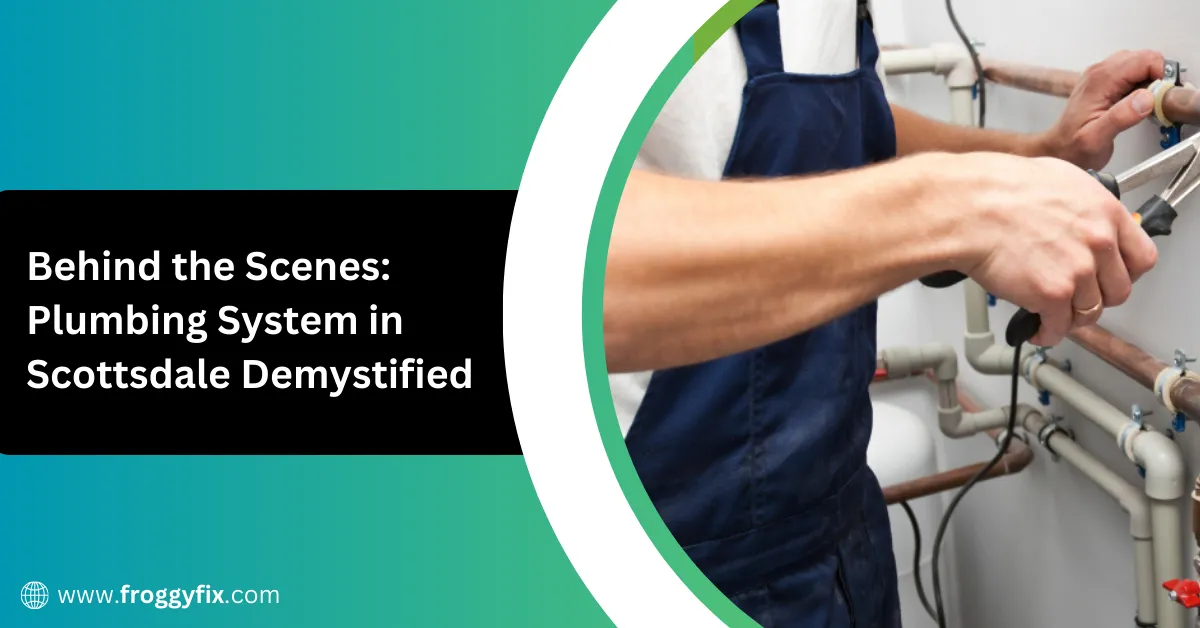

18 03
2024
Nestled in the heart of the Sonoran Desert, Scottsdale, Arizona, boasts not only breathtaking landscapes but also a sophisticated infrastructure that ensures the seamless functioning of modern amenities. Among these crucial components is the plumbing system, a network of pipes and fixtures that often operates quietly behind the scenes yet plays a pivotal role in our daily lives.
In this comprehensive exploration, we peel back the layers of Scottsdale’s plumbing infrastructure, shedding light on its evolution, challenges, and significance. Join us on a journey through time and technology as we unravel the complexities of the plumbing system in Scottsdale, uncovering its vital importance in sustaining the city’s vibrant community.
Throughout history, plumbing systems have undergone remarkable transformations, evolving from rudimentary channels to intricate networks that facilitate the distribution of water and the disposal of waste. The ancient civilizations of Mesopotamia and Egypt laid the foundation for early plumbing systems, utilizing clay pipes and aqueducts to transport water for irrigation and domestic use.
Fast forward to the Roman Empire, and we encounter perhaps the most renowned pre-industrial plumbing system. The Romans pioneered the use of lead pipes, creating a vast network that supplied water to public baths, fountains, and private residences. The sophistication of Roman plumbing was unparalleled in its time, showcasing advanced engineering techniques that endured for centuries.
In the United States, the 20th century witnessed significant advancements in plumbing technology. The 1970s marked a transition period, with the widespread adoption of PVC (polyvinyl chloride) pipes replacing older materials such as cast iron and galvanized steel. This shift revolutionized the plumbing industry, offering improved durability and corrosion resistance.
Scottsdale’s history is intertwined with its plumbing infrastructure, reflecting the city’s growth and development over the decades. In the early 20th century, Scottsdale relied on well systems and septic tanks to meet its water and sanitation needs, serving a small but burgeoning population.
As Scottsdale experienced rapid expansion in the post-war era, the demand for modern plumbing solutions surged. Municipal water supply systems were established, drawing water from the Salt River Project and other sources to accommodate the city’s growing populace. At the same time, the introduction of sewage treatment facilities addressed sanitation concerns, paving the way for further urbanization.
Today, Scottsdale boasts a robust plumbing network that encompasses residential, commercial, and industrial sectors. Modern buildings are equipped with state-of-the-art plumbing fixtures, including low-flow toilets, high-efficiency faucets, and water-saving appliances, reflecting a commitment to sustainability and conservation.
Despite the advancements in plumbing technology, Scottsdale faces unique challenges posed by its arid climate and desert environment. Water scarcity is a pressing issue, prompting initiatives to promote water conservation and efficient usage. In response, innovative solutions such as greywater recycling and xeriscaping have gained traction, reducing strain on the municipal water supply.
Additionally, aging infrastructure presents maintenance challenges for Scottsdale’s plumbing system. Pipelines deteriorate over time, leading to leaks, bursts, and water loss. To mitigate these risks, ongoing inspection and rehabilitation efforts are essential, employing techniques such as trenchless pipe repair and epoxy lining to extend the lifespan of existing infrastructure.
Maintaining a functional plumbing system is paramount to the health, safety, and well-being of Scottsdale residents. Regular inspections and maintenance help identify potential issues before they escalate into costly repairs or emergencies. From routine drain cleaning to water heater servicing, proactive measures ensure the reliability and efficiency of plumbing systems across the city. To learn more about, plumbing system in Scottsdale, check this out https://froggyfix.com/plumbing-system-in-scottsdale-offering-efficacy-with-efficiency/.
Moreover, proper maintenance extends the longevity of plumbing fixtures and appliances, reducing the need for premature replacements and conserving resources. By investing in preventive care and staying vigilant against leaks and inefficiencies, homeowners and businesses can minimize their environmental footprint while maximizing the performance of their plumbing systems.
Looking ahead, the plumbing system in Scottsdale is poised to embrace emerging trends and technologies that promise to enhance efficiency, sustainability, and resilience. One notable trend is the integration of smart plumbing solutions, leveraging IoT (Internet of Things) technology to monitor and manage water usage in real time. Smart metres, leak detection sensors, and automated shut-off valves empower homeowners and utility providers to identify leaks and conserve water with unprecedented precision.
Furthermore, advancements in green plumbing practices are reshaping the landscape of sustainable construction and renovation in Scottsdale. From passive solar water heating systems to rainwater harvesting infrastructure, eco-friendly innovations offer a holistic approach to water conservation and energy efficiency. By harnessing renewable resources and minimizing environmental impact, green plumbing initiatives align with Scottsdale’s commitment to sustainability and climate resilience.
In the realm of wastewater management, decentralized treatment systems are gaining traction as cost-effective alternatives to traditional centralized sewer systems. These decentralized solutions, such as onsite wastewater treatment plants and constructed wetlands, offer greater flexibility and scalability, particularly in rural and remote areas where centralized infrastructure may be impractical or prohibitively expensive.
Moreover, the advent of 3D printing technology holds promise for revolutionizing plumbing design and manufacturing processes. Customizable fixtures and components can be fabricated with precision and efficiency, reducing waste and lead times while enabling greater design flexibility and innovation. As 3D printing continues to mature, its potential applications in plumbing are limited only by imagination and ingenuity.
In the face of evolving regulatory requirements and environmental concerns, collaboration between stakeholders is essential to shaping the future of Scottsdale’s plumbing system. Municipal authorities, industry professionals, and community advocates must work together to develop comprehensive strategies that address water scarcity, infrastructure resilience, and equitable access to essential services.
The plumbing system in Scottsdale stands at the threshold of a new era characterized by innovation, sustainability, and resilience. By embracing emerging trends and harnessing cutting-edge technologies, Scottsdale can build upon its legacy of excellence in plumbing, ensuring a prosperous future for generations to come. From its humble origins to its modern-day complexities, plumbing has played a central role in shaping the growth and prosperity of this desert oasis.